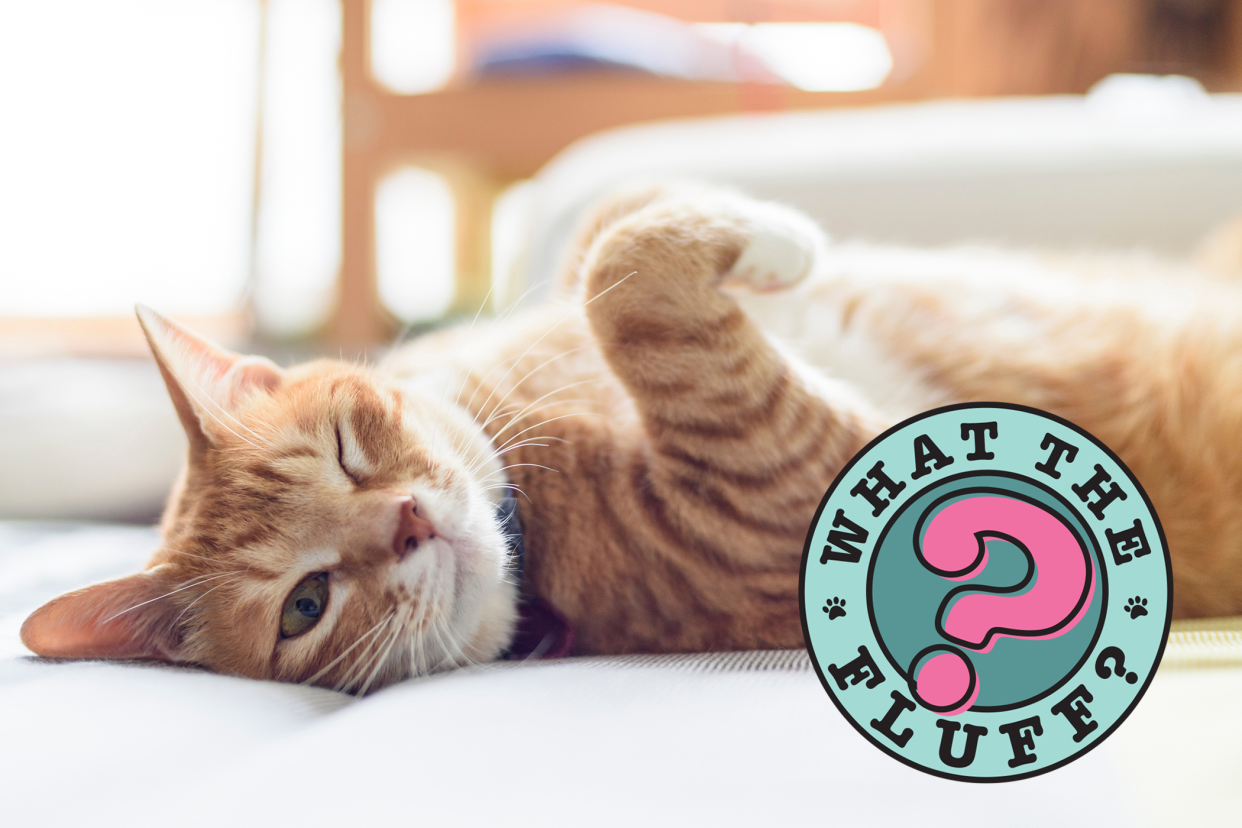How Many Nipples Do Cats Have?

Shum Gary / EyeEm / Getty
Do all cats have nipples?
It's the kind of question you might ponder internally but are reluctant to utter out loud. But there's no need to feel shame. To us, it's a perfectly normal query, though we're unabashed cat people.
The short answer is simple: All cats have nipples—even male cats!
Naturally, you might also be wondering how many nipples do cats have? (Again, we believe this to be an irrefutably reasonable inquiry.)
According to Laura Moon, DVM, of Green Hills Veterinary Clinic in Moberly, Mo., both male and female cats generally have six to eight nipples. And because cats can have an odd number of nipples, it's possible that not every nipple will have a symmetrical mate.
But knowing that all cats have nipples and filing away how many nipples cats have doesn't quite get to the heart of the matter—namely, why do male cats have nipples in the first place?
Why Do Male Cats Have Nipples?
"The same question could be asked of humans," notes Moon. She says that the answer goes back to when the cat was still an embryo. Both male and female cats begin with the same genetic material and thus start developing the same structures (including nipples) as young embryos.
Later, sex-specific hormones determine whether these structures go on to become male or female sex organs and fully functioning mammary glands versus rudimentary, nonfunctional ones. So to put it simply, the reason why male cats (and male humans) have nipples is because they develop in the embryo before sex differentiation occurs.
How Do a Cat's Nipples Change During Pregnancy?
Don't let the presence of merely decorative nipples on male cats distract you from the highly important role they can play in female cats, or queens. Pregnancy typically lasts around two months in cats, and during that time, the pregnant cat's nipples will begin to prepare for their upcoming job.
"Initially, there will be no difference in a pregnant queen's nipples," says Moon. "It isn't until the last two weeks of pregnancy that the mammary glands undergo major growth and development and milk begins forming." She explains that at this point, the nipples will get slightly larger and may have sparser hair than usual.
The average pregnant queen gives birth to four kittens per litter who will rely on these hardworking mammary glands for at least the next six to seven weeks. The Merck Veterinary Manual notes that nursing queens need to double or triple their usual caloric intake to be able to keep up with how many calories they burn feeding their kittens.
Signs Your Cat Needs to See a Vet
The health of your cat's nipples might seem like an awkward topic to bring up with your veterinarian, but you needn't be bashful. Moon lists the following conditions to watch for:
Mastitis
If your lactating queen develops any redness, swelling, tenderness, or abnormal milk discharge (e.g. a change in color or consistency), Moon says it's time to call the vet. These are all signs your cat may have mastitis, in which one or more mammary glands become inflamed due to a bacterial infection.
Mammary Tumors
Both male and female cats can develop mammary tumors, though they're far more common in queens. According to the Cornell Feline Health Center, mammary cancer is the third most common type of feline cancer and the most common type diagnosed in cats 10 years of age and older. With this in mind, it's a good idea to make a habit of rubbing your cat's underside once a week to check for abnormal lumps.
"Approximately 80 percent of feline mammary tumors are malignant," notes Moon. "So if your cat develops a mass in any mammary gland, it will need to be surgically removed to determine what kind of tumor it is."
Though the underlying causes of feline mammary cancer are still unknown, a 2005 study found that it was far more common in unspayed cats. In fact, according to the results, cats spayed before 6 months of age were 91 percent less likely to develop the disease when compared with intact cats, and cats spayed before their first birthday had an 86 percent reduction in risk.
Inverted Nipples
On a lighter note, Moon adds that both male and female cats sometimes develop waxy casts inside of tucked in, or inverted, nipples. "This typically doesn't cause any issues or discomfort," she explains, "and you can easily express it like a zit."
As always, you are the resident expert on what is and isn't normal when it comes to your own cat. So if you see something out of the ordinary and feel even the slightest bit worried, don't hesitate to contact your veterinary clinic.

